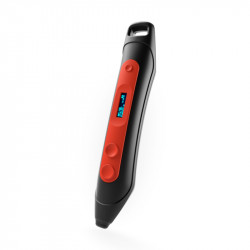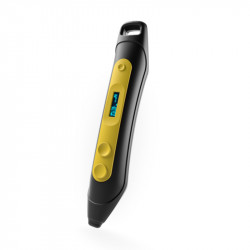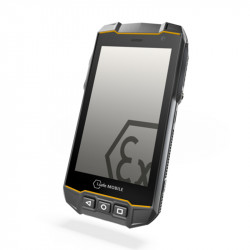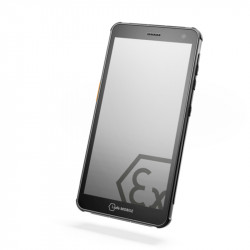Musíte být přihlášen
-
moreX
-
Komponenty
-
-
Category
-
Polovodiče
- LED diody
- Tyristory
- Elektroizolační moduly
- Přemosťovací usměrňovače
-
Tranzistory
- Tranzistory | GeneSiC
- SiC MOSFET moduly | Mitsubishi
- SiC MOSFET moduly | STARPOWER
- Moduly ABB SiC MOSFET
- Moduly IGBT | MITSUBISHI
- Tranzistorové moduly | MITSUBISHI
- Moduly MOSFET | MITSUBISHI
- Tranzistorové moduly | ABB
- Moduly IGBT | POWEREX
- Moduly IGBT | INFINEON (EUPEC)
- Polovodičové prvky z karbidu křemíku (SiC)
- Go to the subcategory
- Ovladače brány
- Bloky napájení
- Go to the subcategory
- Měniče proudu a napětí LEM
-
Pasivní součásti (kondenzátory, rezistory, pojistky, filtry)
- Rezistory
-
Pojistky
- Miniaturní pojistky pro elektronické obvody řady ABC a AGC
- Trubkové rychle působící pojistky
- Pojistkové vložky s časovým zpožděním s charakteristikami GL / GG a AM
- Ultrarychlé pojistkové články
- Rychle působící pojistky (britský a americký standard)
- Rychle působící pojistky (evropský standard)
- Pojistky pojezdu
- Pojistkové vložky vysokého napětí
- Go to the subcategory
-
Kondenzátory
- Motorové kondenzátory
- Elektrolytické kondenzátory
- Filmové kondenzátory
- Výkonové kondenzátory
- Kondenzátory pro stejnosměrné obvody
- Kondenzátory korekce účiníku
- Vysokonapěťové kondenzátory
- Indukční topné kondenzátory
- Kondenzátory pulsu a energie
- DC LINK kondenzátory
- Kondenzátory pro AC / DC obvody
- Go to the subcategory
- EMI filtry
- Superkondenzátory
- Přepěťová ochrana
- Go to the subcategory
-
Relé a stykače
- Teorie relé a stykačů
- 3fázová střídavá polovodičová relé
- 3fázová střídavá polovodičová relé
- Regulátory, ovládací prvky a příslušenství
- Měkké spouštění a reverzační stykače
- Elektromechanická relé
- Stykače
- Otočné spínače
-
Jednofázová střídavá polovodičová relé
- Jednofázová střídavá polovodičová relé, 1 řada | D2425 | D2450
- Jednofázová střídavá polovodičová relé řady CWA a CWD
- Jednofázová střídavá polovodičová relé řady CMRA a CMRD
- Jednofázová střídavá polovodičová relé řady PS
- Dvojitá a čtyřnásobná střídavá polovodičová relé řady D24 D, TD24 Q, H12D48 D.
- Jednofázová polovodičová relé řady GN
- Jednofázová střídavá polovodičová relé řady CKR
- Jednofázová AC relé na lištu DIN řady ERDA A ERAA
- Jednofázová AC relé pro proud 150 A.
- Dvojitá polovodičová relé integrovaná s chladičem pro lištu DIN
- Go to the subcategory
- Jednofázová AC polovodičová relé pro PCB
- Relé rozhraní
- Go to the subcategory
- Jádra a další indukční součásti
- Radiátory, varistory, tepelné ochrany
- Fanoušci
- Klimatizace, příslušenství pro elektrické skříně, chladiče
-
Baterie, nabíječky, vyrovnávací zdroje a střídače
- Baterie, nabíječky - teoretický popis
- Lithium-iontové baterie. Vlastní baterie. Systém správy baterií (BMS)
- Baterie
- Nabíječky baterií a příslušenství
- Záložní zdroj UPS a vyrovnávací napájecí zdroje
- Převaděče a příslušenství pro fotovoltaiku
- Úschovna energie
- Palivové články
- Lithium-iontové baterie
- Go to the subcategory
-
Automatika
- Futaba Drone Parts
- Koncové spínače, mikrospínače
- Senzory, převodníky
- Pyrometrie
- Počítadla, časovače, panelové měřiče
- Průmyslová ochranná zařízení
- Světelná a zvuková signalizace
- Termovizní kamera
- LED displeje
- Tlačítka a spínače
-
Zapisovače
- Zapisovač AL3000
- Rekordér KR2000
- Rekordér KR5000
- Měřič HN-CH s funkcí registrace vlhkosti a teploty
- Spotřební materiál pro zapisovače
- Rekordér 71VR1
- Zapisovač KR 3000
- Počítačové rekordéry řady R1M
- Počítačové rekordéry řady R2M
- PC rekordér, 12 izolovaných vstupů - RZMS-U9
- PC rekordér, USB, 12 izolovaných vstupů - RZUS
- Go to the subcategory
- Go to the subcategory
-
Kabely, dráty, vodiče, flexibilní připojení
- dráty
- lanka
- Kabely pro speciální aplikace
- košile
-
prýmky
- prýmky byt
- prýmky kolo
- Velmi flexibilní opletení - plochý
- Velmi flexibilní opletení - Round
- Měď opletené válcové
- Mědí štít a válcové
- Flexibilní zemnící pásky
- Opletení válcovité pozinkované a nerezové oceli
- PVC izolované měděné pletivo - teplota 85 ° C
- Ploché pletené hliníkové
- Connection Kit - prýmky a trubky
- Go to the subcategory
- Příslušenství pro trakční
- kabelové botky
- Ohebné izolované přípojnice
- Vícevrstvá ohebná lišta
- Systémy vedení kabelů
- Potrubí, trubky
- Go to the subcategory
- View all categories
-
Polovodiče
-
-
- Suppliers
-
Applications
- AC a DC pohony (střídače)
- Automatizace HVAC
- CNC obráběcí stroje
- Energy bank
- Indukční ohřev
- Komponenty pro prostředí s nebezpečím výbuchu (EX)
- Měření a regulace teploty
- Měření a regulace teploty
- Motory a transformátory
- Napájecí zdroje (UPS) a usměrňovací systémy
- Průmyslová automatizace
- Průmyslová automatizace
- Průmyslová ochranná zařízení
- Stroje na sušení a zpracování dřeva
- Stroje na tvarování plastů za tepla
- Svařovací stroje a svářecí stroje
- Těžba, hutnictví a slévárenství
- Tisk
- Tramvajová a železniční trakce
- Zařízení pro distribuční, řídicí a telekomunikační skříně
-
Instalace
-
-
Induktory
-
-
Indukční zařízení
-
-
https://www.dacpol.eu/pl/naprawy-i-modernizacje
-
-
Servis
-
- Kontakt
- Zobacz wszystkie kategorie
The role of NFC technology in the industry

Today, almost all daily activities are accompanied by our smartphone. This is not surprising, since it allows us to control smart devices present in our homes, such as household appliances, as well as lighting and air conditioning systems. With such dynamic changes in technology, it was only a matter of time before such solutions were introduced to industry, which resulted in the so-called Industry 4.0.
The development of digitalization, network and Internet technologies significantly affected the speed of implementation of new solutions in this area.
Industry 4.0 integrates intelligent machines and systems to make changes in production processes that increase the efficiency of the entire industrial facility. The main idea is to connect devices and machines vertically and horizontally into a single network using Internet standards. An additional aspect is the use of artificial intelligence to provide machines with the ability to learn and self-improve.
In today's article we will focus on one of the technologies used in Industry 4.0, namely NFC technology. We will tell you what NFC technology is, what is its role in the industry and what solutions are based on this technology.
What is NFC?
NFC (Near Field Communication) is a technology that provides a convenient and secure transmission of digital data over short distances (up to 20 cm) using high frequency radio waves. Such a solution makes it possible to connect smart devices with a technology platform for the implementation of various services. The most popular solution using NFC technology is to support cashless payments.
NFC technology distinguishes between two modes of operation: active and passive. The active mode operates a device that is capable of emitting an electromagnetic field that is used when sending and receiving data. However, the second mode does not produce its own radio signal, but only relies on the energy it acquires from another active module. Active systems need power to operate, while passive systems do not.
By default, NFC works in three different modes:
- Read/Write – The device reads information from special electronic tags, such as smart posters;
- Peer-to-Peer – data exchange between two devices;
- Card Emulation – the devices work as everyday cards, e.g. a bus ticket or a payment card;
NFC applications in industry
In addition to the previously mentioned applications, NFC technology is also being used more and more in industrial sectors. Thanks to its ability to transmit data over short distances, NFC is used in authentication systems. In order to open doors, gates and wickets, it is enough to put a smart device, such as a phone to the reader. Depending on the access granted, the lock will open or not. This directly affects the comfort and speed of access to a particular room.
The use of specially programmed tags can enable a machine or device manual to be opened on a mobile device after it has been scanned.
Another application is to protect goods from counterfeiting. By placing a specific NFC tag on the goods, we are able to identify its authenticity and check the legitimacy of the product.
Examples of implementation:
Logistics and Warehouse Management
- Quick identification of products and materials e.g. wood, packaging, containers, clothing;
- Monitoring of goods - including products stored in harsh environments.
Person/animal identification
- Identification and monitoring of people and animals, e.g. with wristbands, cards, microchips or key rings.
Process automation
- Connecting Bluetooth devices;
- Wi-Fi network sharing;
- Activation of configuration profiles and various functions on the phone.
Související produkty
Související příspěvky
 Now available – DC/DC converters from PREMIUM
Now available – DC/DC converters from PREMIUM
 New release in DACPOL lighting for lathes – Kira covers
New release in DACPOL lighting for lathes – Kira covers









Zanechat komentář